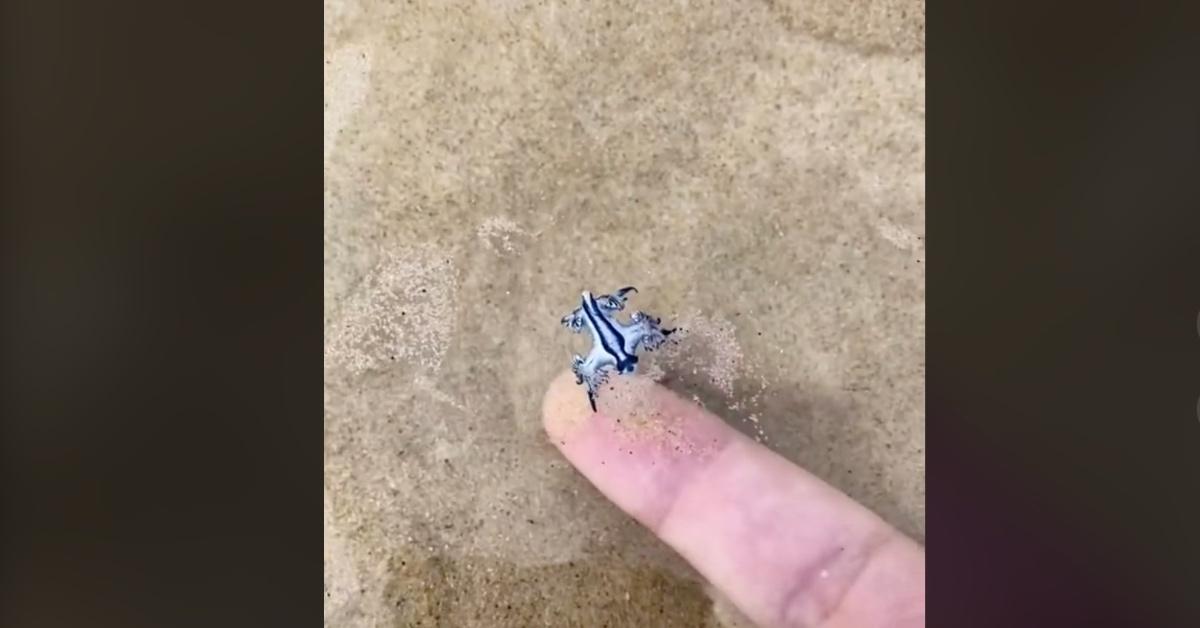One TikTok User's "Pokémon" Is Another's Dangerous Australian Sea Creature
Published Dec. 11 2021, 11:49 a.m. ET

Users on TikTok are accustomed to the unexpected, but no one could anticipate the results of user @julianobayd's day at the beach. While Julian was visiting the beach at Stradbroke Island in Queensland, Australia, he discovered a tiny blue creature in the water. In a now-viral video posted to TikTok, Julian wrote, "Anyone know what this is?"
Comments flooded in attempting to identify the blue creature, which Julian notes in a second TikTok video, "moves like a Pokémon." Thankfully, there was one commenter who identified the creature as a glaucus atlanticus, or blue dragon, which is a type of sea slug. What is a glaucus atlanticus, and is it poisonous? Read on for everything we know about this viral sea creature.

What is a Blue glaucus atlanticus?
As it turns out, the glaucus atlanticus is indeed dangerous, per Oceana.org. The creature "incorporates toxic chemicals or stinging cells from its prey into its own skin" and can be found floating through the waters of Australia on its backside. The glaucus atlanticus is a type of nudibranch or a soft-bodied sea slug.
Typical nudibranchs, per National Geographic Kids, spend their time sliding on their bellies in search of food. The nudibranch diet includes coral, sponges, and fish eggs off of the ocean floor. However, as Oceana states, the glaucus atlanticus has a slightly different diet. The blue dragon slug is not dangerous on its own but stores "stinging nematocysts" when feeding on its preferred prey, the Portuguese man o'war jellyfish.
The glaucus atlanticus then keeps the stinging cells from the jellyfish's poisonous tentacles to unleash on unsuspecting creatures if they feel threatened. Oceana even notes that sometimes the sting of a blue dragon slug is even more dangerous than the jellyfish from which it stole the poison.
Blue dragons have become increasingly common in Australia. According to Vice, the tiny creatures have been "turning up in droves" since February 2021, typically following a full moon. Marine biologist Sarah-Jo Lobwein of the Australian Environmental Educators Association explained to the ABC there could be a climate-change-related reason for the sudden influx of blue dragons.
"I think it is the combination of warming or changing seas … possibly leading to a 'trigger' in the explosion of the animals at certain times but reliant on that perfect mix of the effect of the Moon on tides, wind direction, water temperature and the currents," She said.
On Julian's fourth video playing with the Blue glaucus, one commenter wrote, "If it's a vibrant color, by the law of nature, don't touch it." Many creatures in the animal kingdom who sport bright, vibrant colors are often poisonous, including the poison dart frog, the coral snake, the flamboyant cuttlefish, the crown of thorns starfish, and other nudibranch species similar to Blue glaucus.
Ultimately, the best rule of thumb when encountering members of the animal kingdom is to steer clear if you can't immediately identify the species. Thankfully, it appears that Julian remains unharmed by the tiny Blue glaucus, but other TikTok users who try to play with the creatures might not be so lucky.